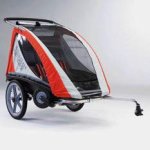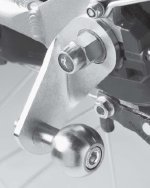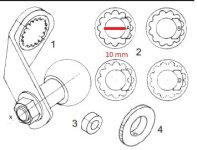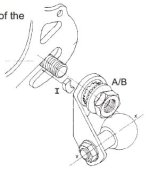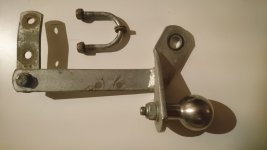Hello,
I have a Q128C rear hub motor that has 12 mm axle. I have a bicycle trailer hitch (see attached picture) that is made for standard 10 mm axle. Specifically, the hitch comes with cogs that are used to prevent the hitch from moving when installed on the axle. See pictures I attached below. First picture is how the hitch looks installed, second picture shows the hitch with corresponding cogs that are used to prevent the hitch from moving, and third picture shows how the hitch is installed with the cog.
Diameter of the cogs is 10 mm. Therefore I cannot put the cogs on the axle in order to prevent the hitch from moving. My question to you is how can I then install this hitch on the axle?
I have and do not want to use an alternative plate that attaches to the frame. That cannot fit because of all the wiring and motor cable being there and I do not want to put that much stress on the frame.
I appreciate any advice. Thank you in advance.
I have a Q128C rear hub motor that has 12 mm axle. I have a bicycle trailer hitch (see attached picture) that is made for standard 10 mm axle. Specifically, the hitch comes with cogs that are used to prevent the hitch from moving when installed on the axle. See pictures I attached below. First picture is how the hitch looks installed, second picture shows the hitch with corresponding cogs that are used to prevent the hitch from moving, and third picture shows how the hitch is installed with the cog.
Diameter of the cogs is 10 mm. Therefore I cannot put the cogs on the axle in order to prevent the hitch from moving. My question to you is how can I then install this hitch on the axle?
- Is it ok to install the hitch without the cog? There will be a nut and washer against the hitch but will this be sufficient to prevent hitch from moving when I am towing?
- If it is not sufficient to install without cog, are there these types of cogs made for 12 mm axles?
- Are there other types of hitch plates that can install into 12 mm axle without moving? I can just remove the ball and install it on another plate. The ball is held in place with a nut and a washer.
I have and do not want to use an alternative plate that attaches to the frame. That cannot fit because of all the wiring and motor cable being there and I do not want to put that much stress on the frame.
I appreciate any advice. Thank you in advance.


